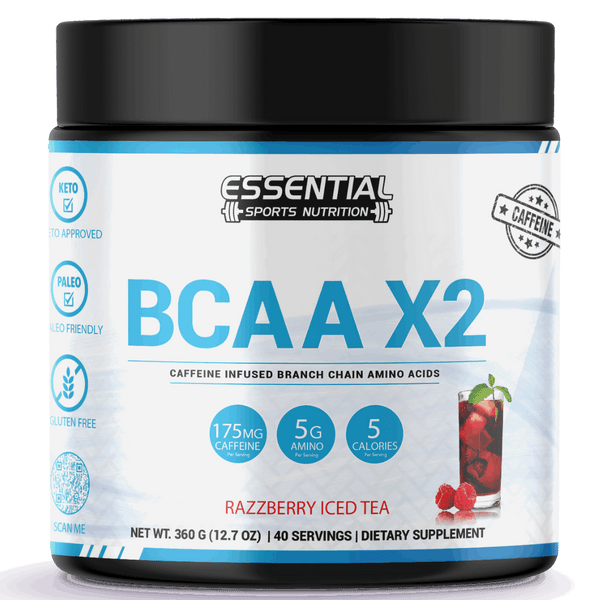Senior Health Secrets: Strengthen Your Back and Feel Young Again
Getting older means keeping your lower back strong and flexible is key. This keeps you moving without pain. Special exercises help seniors improve their back's condition. They make sure you can keep doing what you love, safely and comfortably.
These exercises fight against lower back pain and help you stay independent. They are designed to be both safe and effective for older adults. By adding these exercises to your routine, you’ll feel better and enjoy life more.

Key Takeaways
- Having a strong and flexible lower back is essential for seniors to maintain an active lifestyle.
- Lower back strengthening exercises alleviate pain and improve overall back health.
- These exercises are specifically designed to be safe and effective for the elderly demographic.
- Regular exercise can significantly enhance mobility and reduce the risk of falls.
- Incorporating these exercises leads to a more comfortable and independent daily life for seniors.
Importance of Strengthening the Lower Back for Seniors
As you get older, keeping your back strong is key for a good life. It's not just about balance, but also avoiding falls. This matters a lot for older folks to keep their lower back healthy and enjoy life.
Benefits of Lower Back Strengthening
Strengthening the lower back offers many pluses. It makes you stand taller and keeps you steady, lowering the risk of getting hurt. Plus, it helps a lot with everyday things like walking, sitting, and lifting. These are great steps to keep you moving well and doing things on your own.
Risks of Not Strengthening the Back
Skip back exercises, and you risk more than a sore back. You might get hurt easier and feel pain often. This could slow you down and make you rely on others. So, taking care of your back as you age is crucial. It keeps you moving and enjoying life without pain.
Getting Started: How to Prepare for Back Exercises

Starting a new exercise program is important, especially for seniors. Preparation is key to make sure the back exercises are helpful and safe. This helps avoid any injuries.
Consulting with Healthcare Providers
Talking to your doctor is the first step. They will recommend exercises that suit your health. This is crucial, especially if you have any health issues or concerns.
Doctors give advice that fits your specific needs. This personalized help is very valuable.
Necessary Equipment
The right tools are crucial for exercising safely. Seniors need items like mats, chairs, and resistance bands. These things make exercises easier and safer.
Safety Tips and Precautions
Staying safe is key when dealing with back pain. Begin slowly and increase the difficulty over time. Always pay attention to how you move to avoid getting hurt.
Never ignore sharp pain during exercises. Listen to your body at all times.
| Preparation Step | Details |
|---|---|
| Consult Healthcare Providers | Ensure exercises are safe and suitable for your health condition. |
| Gather Necessary Equipment | Use mats, chairs, and resistance bands for comfort and support. |
| Follow Safety Tips | Start slowly, focus on form, and avoid pain-inducing movements. |
Best Lower Back Strengthening Exercises for Seniors
Some exercises are great for seniors wanting to keep their backs healthy and reduce pain. They are both safe and effective. Let's look at the top exercises for seniors aiming to ease lower back pain.
Glute Bridge
The Glute Bridge is perfect for seniors. It targets the glutes and offers lower back support, lessening pain. Lie on your back with knees up and feet down. Lift your hips, squeeze your glutes, then lower.
Bird-Dog Exercise
The Bird-Dog is good for coordination and core stability. It balances and strengthens the back and core. Get on all fours, then stretch one arm and the opposite leg. Switch sides after a few seconds.
Modified Plank
The Modified Plank boosts core and back strength for seniors. It's a key part of easing back pain. Begin in a plank but with knees down, keeping your back and core tight. Hold for 20-30 seconds, focusing on breathing.
Adding these exercises to your routine can do wonders for your lower back and overall strength. Regular practice can lead to a more active, less painful life as a senior.
Low-Impact Back Workouts for Elderly
Staying active is important for seniors, even for their back health. But, it's crucial to do it safely. Low-impact back workouts are designed just for that, offering a way to keep your back healthy without too much stress. These exercises particularly help those with joint issues or who find moving hard.
Seated Lower Back Rotational Stretch
The Seated Lower Back Rotational Stretch is great for boosting flexibility and helping your spine. First, sit on a chair with your feet firm on the ground. Then, slowly turn your upper body to one side, using the back of the chair to support yourself. Do this stretch on both sides. It helps your spine move more smoothly and can reduce discomfort in your lower back.
Bent Knee Raise
The Bent Knee Raise is a fantastic option for a gentle back work out. To do it, lie on your back with your knees bent and your feet flat. Lift one knee up towards your chest and hold for a bit, then lower it. Do the same with the other leg. This move works your lower back and stomach muscles. It's good for your overall back wellness and easy for seniors to do often.
Gentle Back Stretches for Seniors

Adding gentle back stretches for seniors to your day can really improve your back's health. These easy exercises don't just reduce lower back pain. They boost your flexibility and strengthen your back muscles too.
Knee-to-Chest Stretch
The Knee-to-Chest Stretch is great for lessening lower back tightness. It aims to improve your range of motion. Plus, it works out your upper back and lower back muscles. Here’s how you can try it:
- Start by lying on your back. Keep your knees bent and feet flat on the floor.
- Pull one knee towards your chest, holding onto it with both hands.
- Stay in this position for 20-30 seconds.
- Then, switch to the other leg and repeat the move.
- Do 3 sets on each side for the best results.
| Benefits | Details |
|---|---|
| Reduces Back Pain | By easing pressure, this stretch can help with alleviating lower back pain. |
| Improves Flexibility | This stretch boosts the range of motion in your back. |
| Supports Upper Back | It efficiently works out the lower and upper back areas. |
Doing simple stretches like the Knee-to-Chest Stretch can benefit your back. It helps seniors stay active and feel good.
Incorporating Core Strength into Back Exercises
Improving your back health brings core strength exercises to your routine. When you engage your core, it supports your lower back. This helps you stand up straight and avoid injuries. Add these core-strengthening moves to your back workout:
- Glute Bridge: It strengthens your glutes and core. This gives extra help to your lower back.
- Modified Plank: Boosts your entire core. This helps keep your lower back strong and stable too.
For older adults wanting more stability and health, doing these exercises is a great idea. Core strength is key not just for your lower back but your whole body. It’s a vital part of strength training for seniors.
| Exercise | Main Benefits |
|---|---|
| Glute Bridge | Strengthens glutes and core, supports lower back |
| Modified Plank | Enhances overall core strength, stabilizes back |
Use the Glute Bridge and Modified Plank to work your core, making your lower back stronger. By focusing on your core muscles with these exercises, you pave the way for better movement and less pain. So, strength training for seniors is critical for staying well.
Common Mistakes to Avoid During Back Workouts

Working out your back is very good for you. But, it's also important to avoid doing things wrong. This can keep you from getting hurt or seeing less good results. Let's go over some mistakes to steer clear of:
- Improper Form: Doing exercises with bad form is a big error. It can hurt and not help you reach your goals. Make sure you do each move right to prevent muscle strains.
- Overexertion: Exercising too much without enough rest is risky. It leads to pain and might cause injuries. Remember to take it easy sometimes and not go overboard.
- Neglecting Core Engagement: Your core's strength is key when working your back. It helps keep your lower back safe during exercises. So, don’t forget to keep your core tight.
- Not Tailoring Workouts: For seniors doing exercises to strengthen their lower back, it’s important to adjust the workouts. Everyone is different. Using the same workout for everyone can be ineffective and even harmful.
Remembering these mistakes can make your back workouts better. You'll see more benefits and stay safe while doing it.
Exercise Frequency and Progression

For seniors, building strength and keeping the lower back healthy is key. They should exercise often and improve safely. This means working out regularly, being patient, and using the right movements for the best results.
Recommended Frequency for Seniors
Seniors should do lower back exercises three times a week. This schedule keeps them on track without pushing too hard. It also gives muscles time to rest and recover, which is important for avoiding injury while building stamina.
Progressing Safely
Starting gradually is crucial for older adults starting an exercise program. They should pick exercises that are easy but still make them work a bit. As they get stronger, they can do more or exercise for longer. It's vital to listen to the body to stop before overdoing it.
Having rest days is essential for muscle recovery. Here's a guide to watch your progress and stay safe:
| Week | Exercise Frequency | Progression Tips |
|---|---|---|
| 1-2 | 3 times/week | Start with low-intensity exercises and focus on proper form. |
| 3-4 | 3 times/week | Gradually increase repetitions and duration. |
| 5-6 | 3 times/week | Incorporate slightly more challenging variations. |
| 7-8 | 3 times/week | Continue to progress by adding light weights or resistance bands. |
By sticking to this plan, seniors can make their lower back exercises work well and be safe. This leads to better back health and more overall happiness.
Conclusion

Strengthening your lower back can greatly improve your life as you get older. It's key for easing back pain and staying active. These exercises help by reducing discomfort and boosting your back's health.
Creating a personalized workout is vital for your lower back. Include moves like the Glute Bridge and Bird-Dog Exercise. This focuses on key muscles for better support and mobility. Remember, going slowly and being careful is crucial for your safety.
Adding core exercises and avoiding mistakes are also important. By sticking to the advice given, you will enjoy an active life without back pain. These workouts are a great way to take charge of your well-being and they can be done in just a few minutes each day. They lead to a happier, more vibrant life.
Back Strengthening for Seniors FAQs
Q: What are the benefits of back strengthening exercises for seniors?
A: Back strengthening exercises for seniors can help alleviate lower back pain, strengthen the back muscles, improve back and hip flexibility, and reduce the risk of back pain.
Q: Why are back strengthening exercises important for seniors?
A: Back strengthening exercises are important for seniors to maintain a strong and healthy back, reduce the risk of common back issues, and improve overall back health.
Q: What are some common exercises that can help strengthen the lower back?
A: Common exercises to strengthen the lower back include back extensions, bird dogs, bridges, and pelvic tilts.
Q: How often should seniors engage in back strengthening exercises?
A: Seniors should aim to incorporate back strengthening exercises into their routine at least 2-3 times a week to see improvements in back strength and flexibility.
Q: What are some exercises seniors can do to alleviate lower back pain?
A: Seniors can try exercises such as seated stretches, gentle yoga poses, and water aerobics to help alleviate lower back pain and improve back mobility.
Q: What are the common causes of lower back pain in seniors?
A: Common causes of lower back pain in seniors include arthritis, osteoporosis, muscle strain, poor posture, and injury.
Q: How can seniors maintain proper form when doing back strengthening exercises?
A: Seniors can maintain proper form by keeping their back straight, engaging their core muscles, and moving slowly and deliberately through each exercise.























